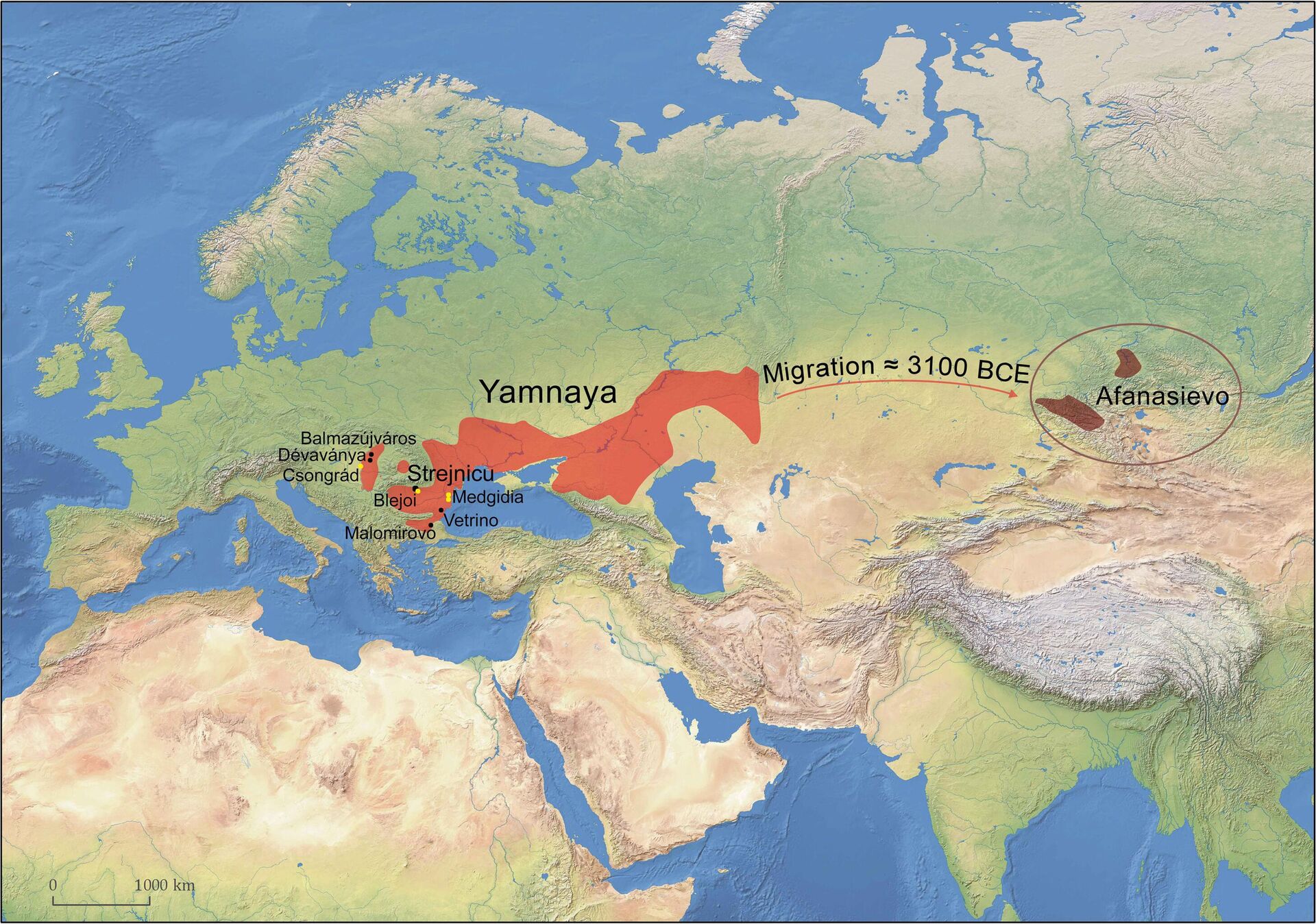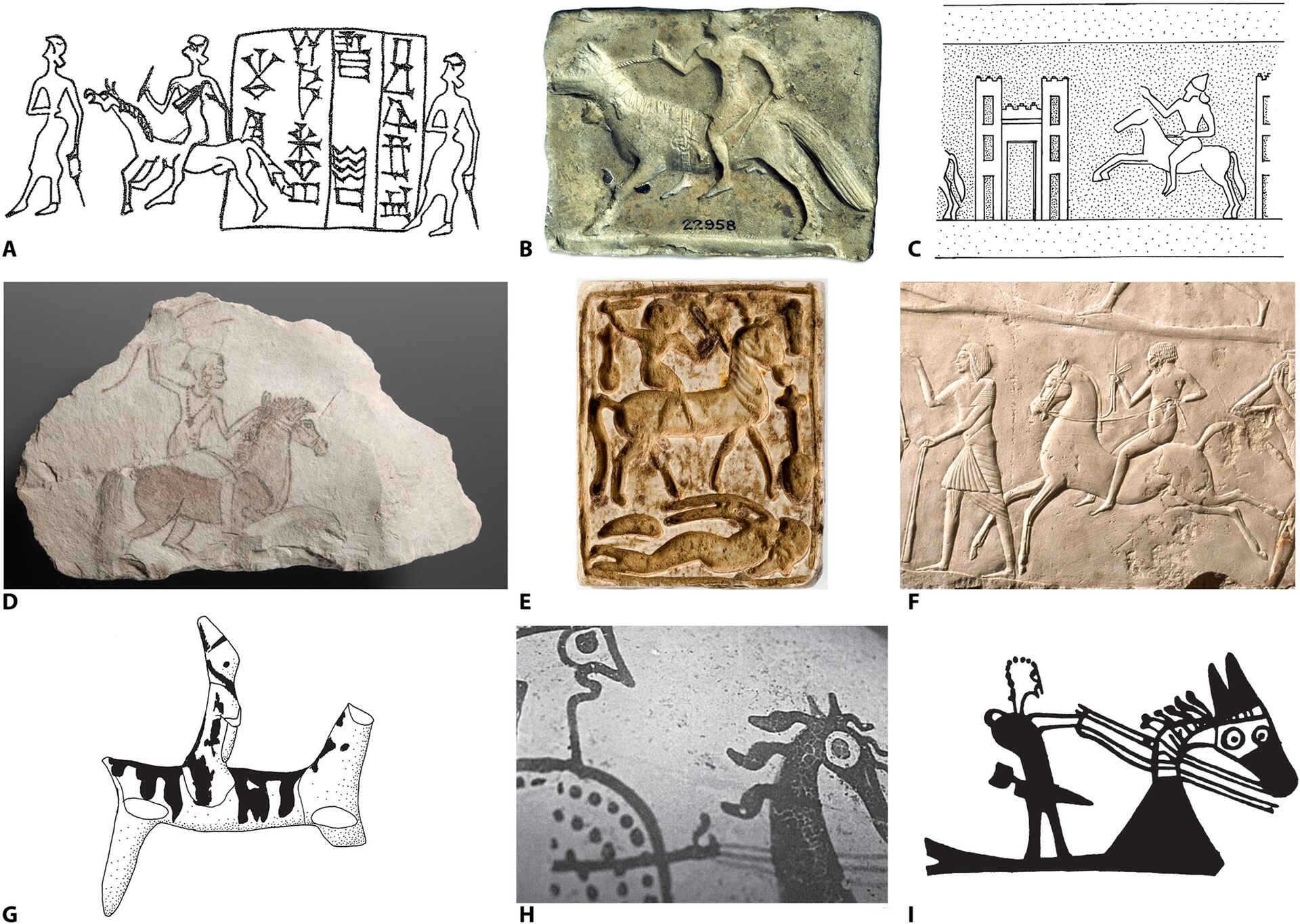
MOSCOW, March 9, Nikolay Guryanov.Horses were domesticated on the territory of modern Russia. The authors of a recent study argue that the first riders were also descendants of the inhabitants of the Black Sea steppes. The archaeological culture to which ancient nomads belonged may have played a major role in human history.
DOM2: The Beginning
The ability to ride a horse changed history. People became more mobile, which greatly influenced, in particular, trade and military affairs. However, who and when first mounted a horse remained a mystery.
It's not easy to install. The earliest horse harness may have been made from materials that are not well preserved. But, most likely, at first the horses were driven without special equipment at all. Therefore, archaeologists are looking for the first riders by indirect signs.
So, in the dentition of a horse from the Kazakh Botai (4th millennium BC), there were marks characteristic of the use of a bridle. However, other work refutes these data. It explains that the damage is caused by natural causes. In addition, the Botai animals turned out to be Przewalski’s horses, that is, a line not related to modern horses.
As geneticists have shown, the homeland of domestic horses from the so-called DOM2 cluster (which includes all modern breeds) was the Pontic-Caspian steppes, or rather , the lower reaches of the Volga and Don. Domestication took place in the III millennium BC.
Trolleys and «pins»
Around the same time, representatives of the so-called Yamnaya culture lived in the region. This historical community, according to one of the most common versions, developed in the interfluve of the Volga and the Southern Urals. From the end of the fourth millennium to the middle of the third, these Caucasoid pastoral nomads settled in large expanses from Hungary to Altai.
They were all united by a certain proto-religion, which is characterized by a specific burial rite — the bodies were buried in a crouched position in pits under the mounds. In addition, «pins» were found in the graves — rods made of horn, covered with ornaments. According to scientists, these may be symbols of the World Tree.
< br />The so-called steppe hypothesis connects the pitmen with their origin from the Indo-Europeans and the spread of the languages of this family, which includes Russian, English, Sanskrit, and many others. The wheels were carved from solid pieces of wood. Most of these «tents» are found in Ciscaucasia — in the Kuban and Stavropol. True, they harnessed, apparently, not horses, but cattle.
However, horses were also used on the farm, most likely as meat and dairy animals. Until now, there was no evidence that representatives of this culture knew how to ride.
«Possibly» and «very likely»
In a new study, bioanthropologist Martin Trautmann of the University of Helsinki and colleagues examined several pit graves from sites in Romania, Bulgaria and Hungary. Archaeological complexes date back to 3021-2501 BC. According to the authors of the work, they discovered signs of riding in the studied skeletons by accident.
Riding leaves marks not only on the body of the horse, but also on the bones of the rider. Specific efforts and loads lead to characteristic changes in the musculoskeletal system.
No specific sign alone will allow you to know for sure whether a person was a horseman. However, the combination of several such markers, according to scientists, may indicate a «riding syndrome». It was determined according to six criteria. These included, in particular, the attachment points of muscles to the pelvis and femur, as well as injuries characteristic of falling from a horse, kicking or biting.
As a result, 24 out of 156 studied individuals fell into the category «possibly ichneumons», and five more were pitmen ov — in the category «very likely riders.» This makes them the oldest riders in history.
Two skeletons with similar features could belong to even earlier eras. «A burial in Hungary dated to about 4300 BC unexpectedly yielded four out of six riding pathologies. Perhaps this indicates that riding was mastered a millennium before the Pitmen,» says one of the authors of the work, David Anthony from Hartwick College, USA .
«We don't see this innovation»
Russian scientists evaluate the new work of their colleagues ambiguously. On the one hand, the authors conducted a large pool of data on how riding affects the rider's skeleton. This may be useful in further research. But there are also dubious points.
«The title contains an unambiguous statement -» The first bioanthropological evidence of pit riding, «says Maria Dobrovolskaya, head of the laboratory of contextual anthropology at the Institute of Archeology of the Russian Academy of Sciences. — However, in the text, which is very detailed and verified, there is no exact evidence «.
She notes that Russian scientists also attempted to describe the so-called equestrian complex on paleoanthropological materials, but did not draw unambiguous conclusions. While experts are accumulating information. 
«If we want to build a rigorous proof system, we need direct parallels with e tnographic cases of equestrianism, — says Dobrovolskaya. — That is, it would be good to check on the X-ray and tomography of living people with a similar lifestyle and compare their data with paleoanthropological ones. It will be more convincing.»
If horse riding occupied a significant place in the life of the pitmen, this would most likely be reflected in their funeral rites, the Russian anthropologist notes. So, in the graves of representatives of this culture, archaeologists find clay figures in the form of wagons. These «models» also have a sacred meaning. However, there are no traces of the important role of horses in the tombs.
«It is possible that at that time someone could ride horses, — explains Dobrovolskaya. — But it is not had social significance, we do not see this innovation reflected in the material culture of the pits. And of course, it is important to consider this issue in connection with the finds of the remains of the horses themselves.
The great resettlement of the pitmen should not be associated with the mastery of horseback riding, the Russian scientist believes. Such a large-scale migration is a complex phenomenon, it can be due to various reasons , from social to climatic.
It takes a lot of work to establish them.According to the anthropologist, the legacy of the Yamnaya culture is still poorly understood.

